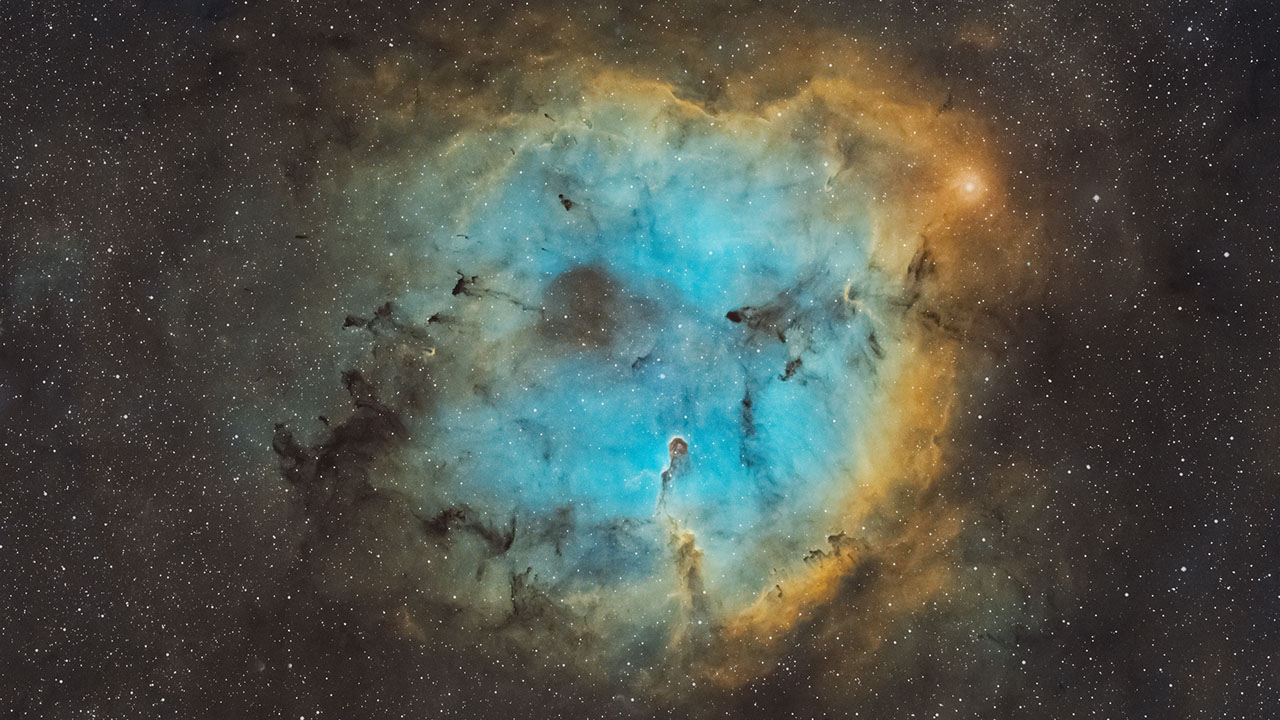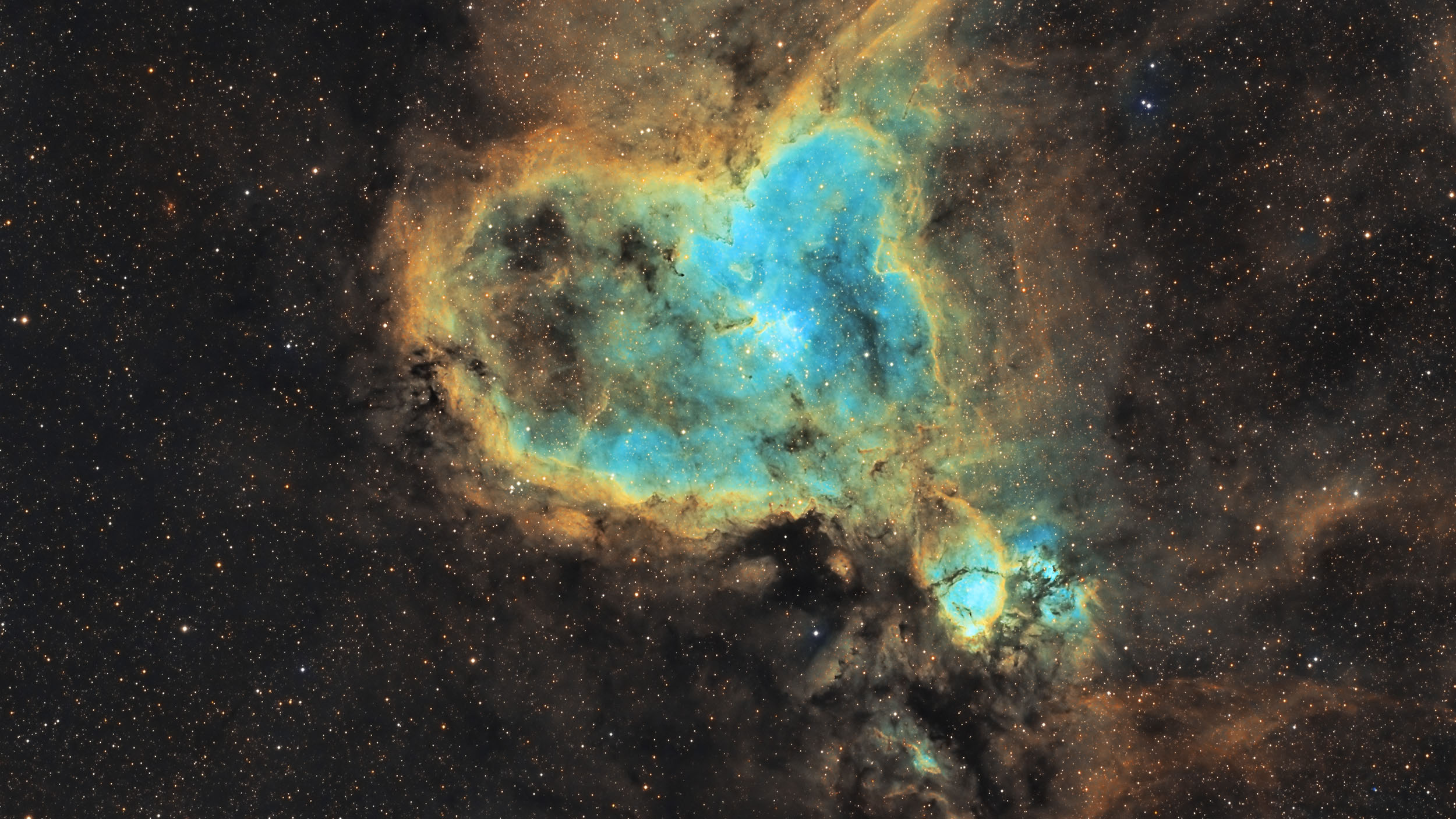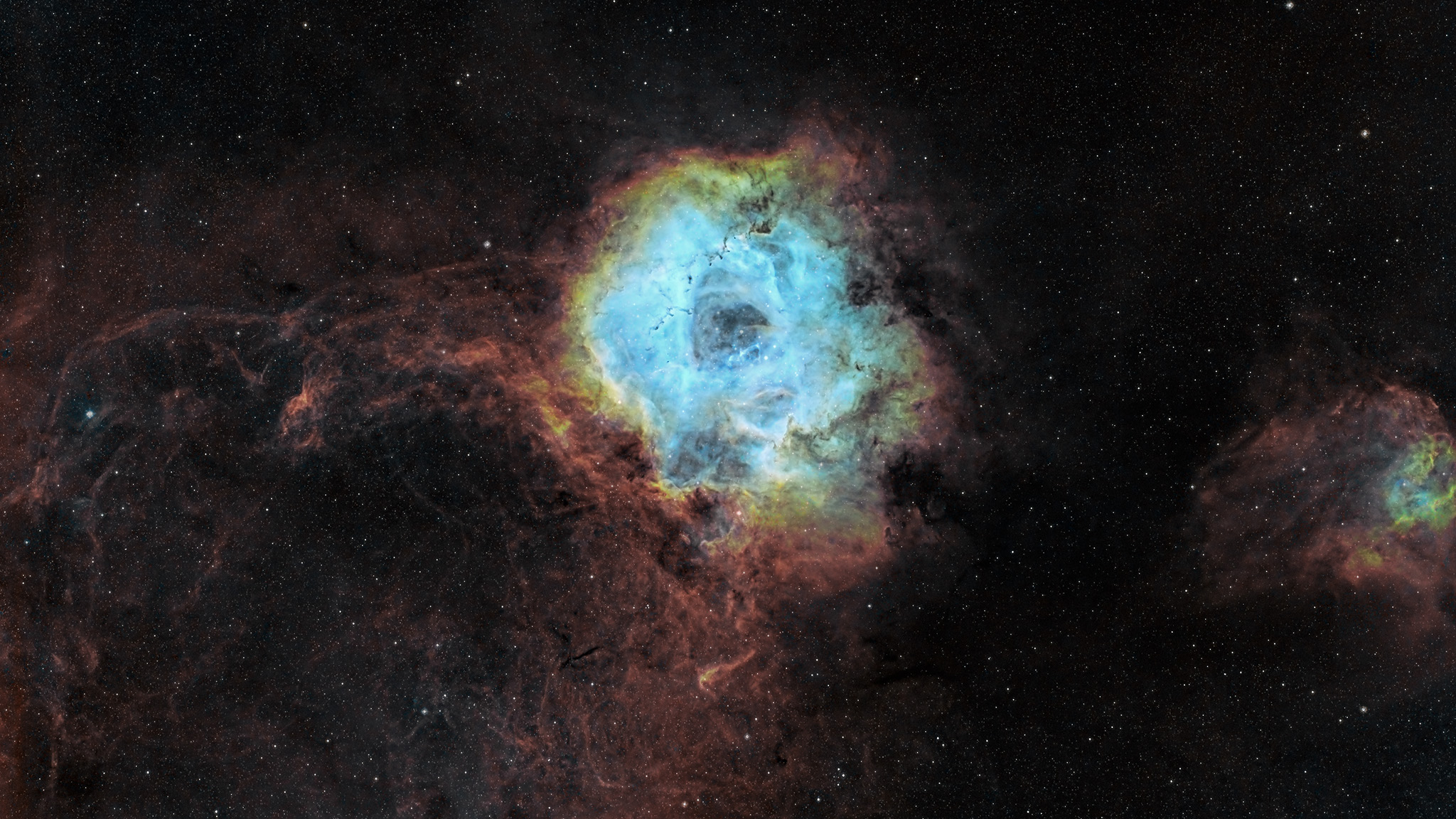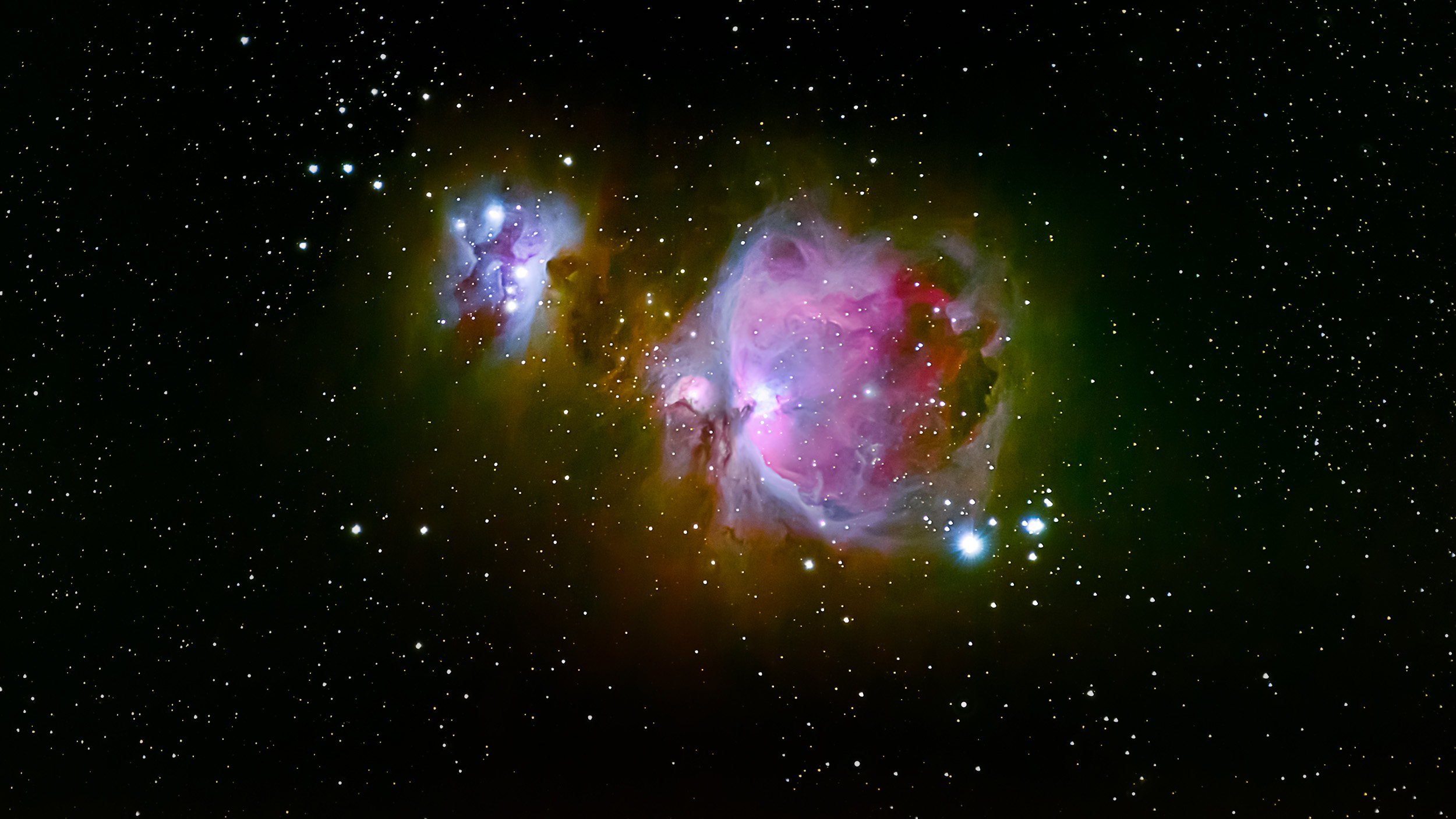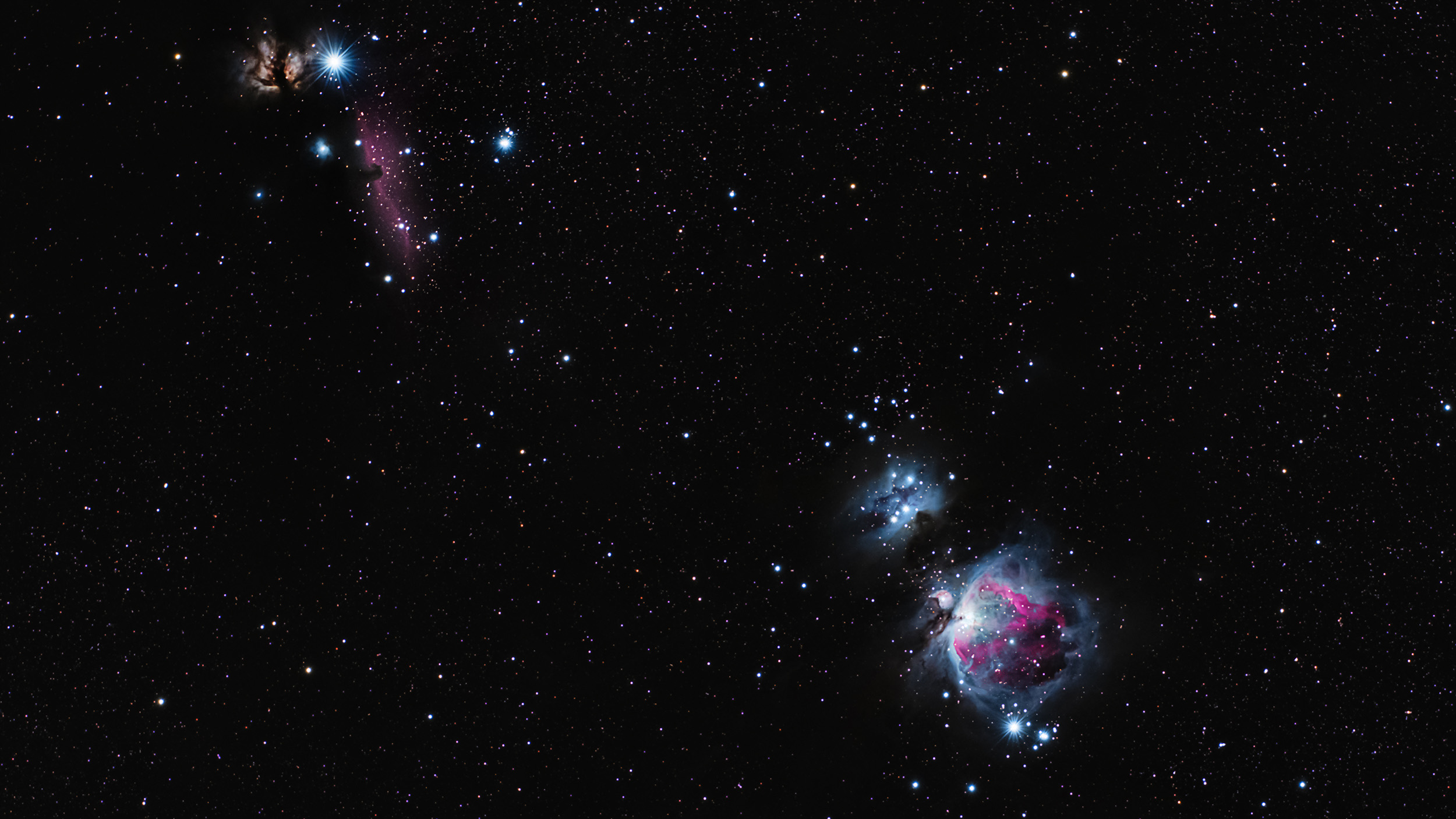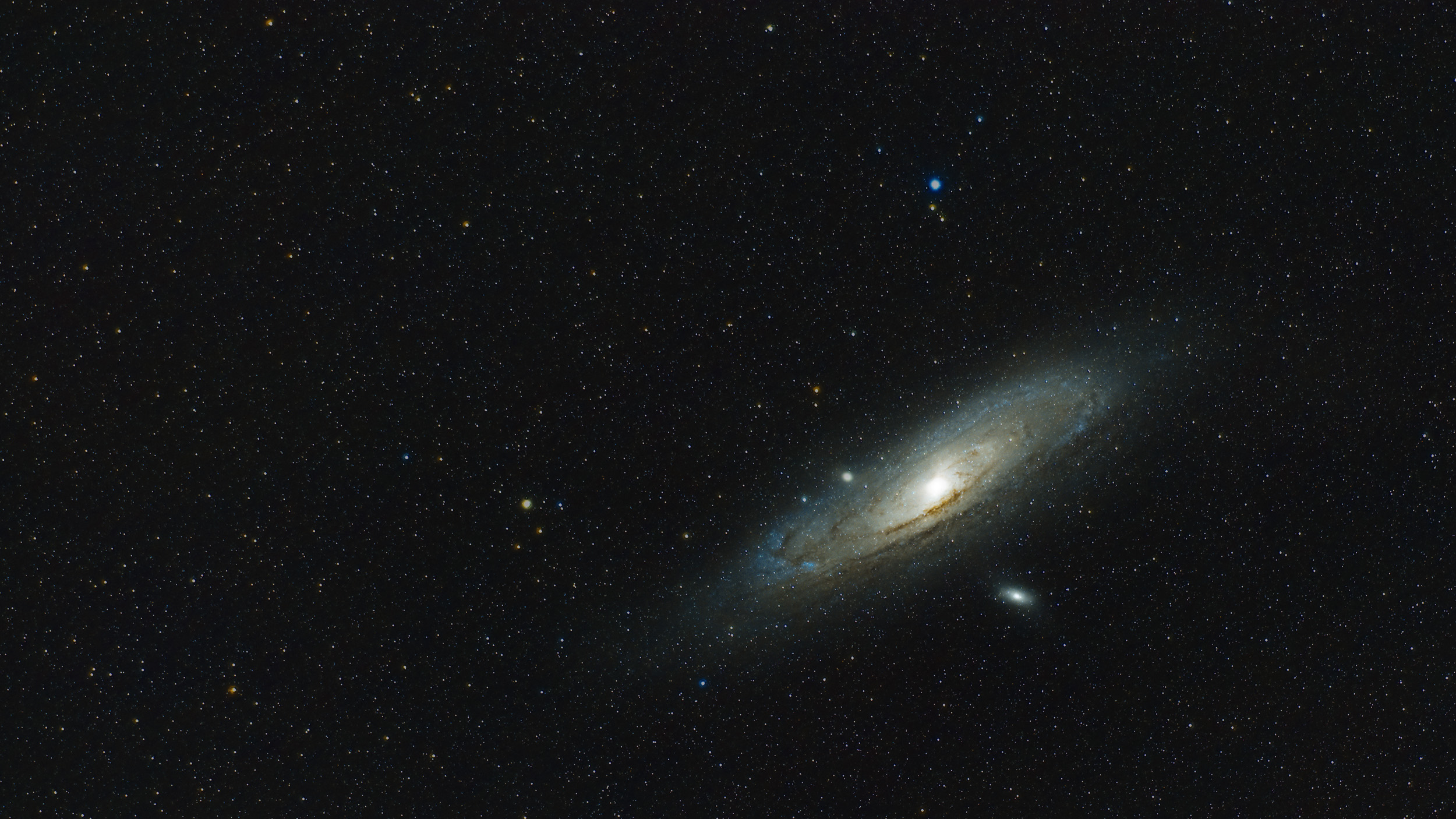North America Nebula
The North America Nebula, NGC 7000 is an emission nebula in the constellation Cygnus, close to Deneb, the tail of the swan and its brightest star. The shape of the nebula resembles that of the continent of North America, complete with a prominent Gulf of Mexico.
It covers a region more than ten times the area of the full moon, but its surface brightness is low, so normally it cannot be seen with the unaided eye. Binoculars and telescopes with large fields of view will show it as a foggy patch of light under sufficiently dark skies. Its shape and reddish color (from the hydrogen Hα emission line) show up only in photographs of the area.
The portion of the nebula resembling Mexico and Central America is known as the Cygnus Wall. This region exhibits the most concentrated star formation.
In 2020, the nebula’s distance was determined with unprecedented accuracy, after the Gaia astrometry satellite measured the precise distances to 395 stars lying within the region. The data show that the North America and Pelican nebulae lie 2,590 light years away. The North America Nebula stretches 90 light years north to south.
RIGHT ASCENSION
20h 59m 17.1s
DECLINATION
+44° 31′ 44″
DISTANCE
2,590 ly
Final image is create by merging and processing multiple images of Ha, OIII and SII filtered gray scale photographs in PixInsight, with final edits in Photoshop.
